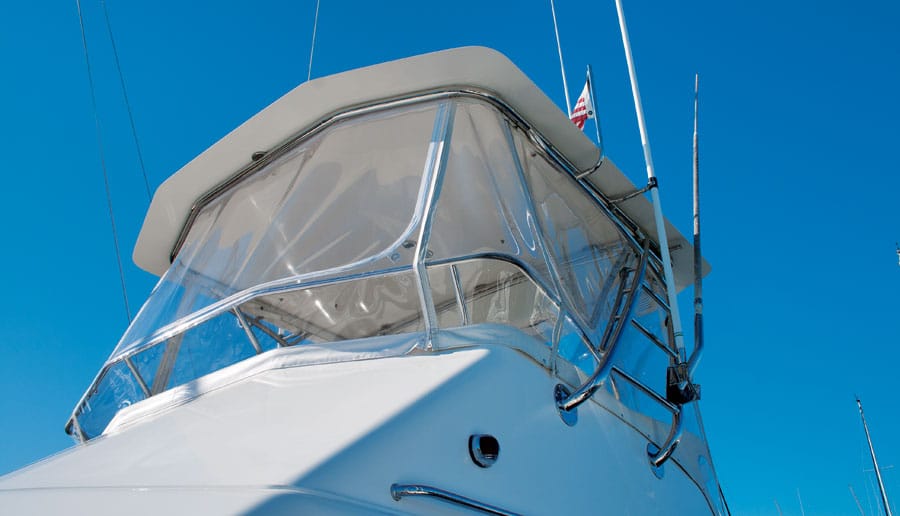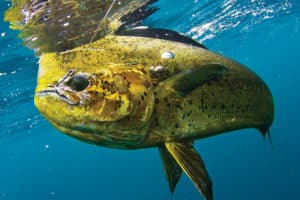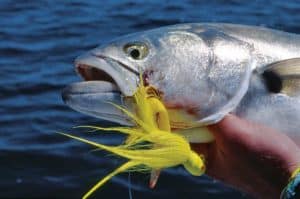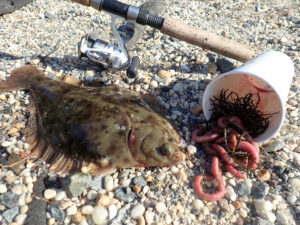
helm choices
On a long run in the dark, I began to hate my boat’s clear-vinyl helm enclosure. Oh sure, it was protecting us from wind and spray, but seeing through it was fretfully difficult. I finally rolled up the forward curtain, and despite the chill, felt reassured by the improved visibility.
Today, clear vinyl is just one of three popular choices for see-through enclosures. Let’s look at the pluses and minuses of each.
**
Clear Vinyl**
Also known as isinglass, clear vinyl is the most common enclosure material. While thickness varies (from 0.020 to 0.060 gauge), it is also the least expensive. Labor costs for a clear vinyl enclosure are usually less as well.
There are two types of clear vinyl — coated, such as Strataglass (www.strataglass.com), and uncoated, such as Crystal Clear 20/20, from the same company. The coated material is a bit more scratch resistant, and also more expensive.
Clear vinyl is soft and flexible, and so you can roll up the curtains. Newer materials are not pliable enough for this.
On the other hand, clear vinyl scratches easily and becomes wrinkled or creased if you don’t roll it smoothly. As such, you need to be careful when handling or stowing the curtains. Scratches are nearly impossible to remove. Also, clear vinyl tends to become yellow and hazy more quickly than new-age materials.
As mentioned earlier, visibility can also be a challenge in the dark, due to the wavy surface that creates distortion, though clarity in daylight is not an issue unless the material has become wrinkled or chalky with age. Still, if budget is a concern, you need to remove the curtains on a regular basis (as on a trailerable fishing boat) or if you don’t do much night fishing, clear vinyl might be the best choice.
Polycarbonate
An increasingly popular material for marine enclosures, this clear plastic offers much-better clarity at night, though during the day, it can produce a slight rainbow effect, particularly if you are wearing polarized glasses. This might impair your ability to see birds, breaking fish, distant weed lines or kelp paddies.
Two of the most popular polycarbonate brands are Lexan from GE (www.ge.com) and Makrolon from Bayer (www.makrolon.com). Special coatings are often used on polycarbonate to help protect the surface from scratches and UV exposure. GE’s Lexan MR-10, for example, is available with a Marguard II surface coating. A scratch in a polycarbonate panel is nearly impossible to remove.
Thick (up to 0.080 gauge), semirigid and virtually unbreakable, polycarbonate is one of the most expensive clear materials. The need for special fabrication techniques can run costs up even further. For example, Lexan is usually pressure-glue-bonded to the marine-fabric borders, and Makrolon requires heavy-duty sewing techniques. As a result, these enclosures can cost three times as much as a similar clear-vinyl design.
Unlike clear vinyl, polycarbonate panels cannot be rolled up, although most enclosures are made so the panels can be unzipped and removed, if necessary. Care must be taken, however, to avoid creasing the panel. On some custom enclosures, the front panel hinges at the top so it can be swung inward and secured to the ceiling of a hardtop when you want some fresh air.
If you rarely need to take the enclosure down, you plan to run at night and budget is not a big concern, polycarbonate is a great choice.
Acrylic
Also growing in popularity is modified high-impact acrylic, marketed under brand names such as Plaskolite Duraplex (plaskolite.com). This material has a high level of UV resistance without need for a special coating. It also offers extraordinary clarity day or night, making it ideal for night passages, as well as eyeballing birds, breaking fish and weeds in daylight hours.
Though not as impact resistant as polycarbonate, it is tough to break, and can be bent around a slightly tighter radius because there is no coating to crack. Yet you still cannot roll it as you can with clear vinyl.
The semirigid material is comparatively thick — 0.080 to 0.090 gauge — in most enclosures, and so it requires special fabrication techniques, such as pressure-glue bonding of the fabric borders. However, modified acrylic enclosures are about 20 percent less expensive than polycarbonate.
While not particularly scratch resistant, modified high-impact acrylic offers one big advantage over both clear vinyl and polycarbonate: Scratches can be buffed out.
If you’re looking to spend slightly less money for an enclosure that will be exposed constantly to the sun yet continue to provide outstanding visibility, then modified high-impact acrylic is a strong option.
Regardless of the clear material, select an experienced custom marine shop to create your enclosure, as there are other key elements, including water- and UV-resistant fabrics, rot-resistant threads, corrosion-proof marine zippers and spray-shedding flaps along the zipper seams.
Investing money in quality materials and construction will help ensure a long-lasting, watertight enclosure. What’s more, if you opt for one of the new see-through plastics, night boating will be safer, and you might even see your way to more fish.
Enclosure Care
The clear panels of your enclosure will serve you longer if you follow these rules:
[1] Thoroughly rinse the panels with lots of fresh water to loosen and wash away salt or dust before any cleaning takes place.
[2] Don’t use harsh cleaners such as Windex, Rain-X or vinegar, as these can strip away vital chemicals that keep the panel flexible and clear.
[3] Use mild liquid soap such as liquid Joy (nonfragrant) or Top Job with lots of fresh water and a clean microfiber towel to gently wash the panels. Rinse thoroughly after cleaning.
[4] Apply a cleaner/polish made especially for clear vinyl, polycarbonate and acrylic — such as Mermaids Plexiglas/Plastic Cleaner & Polish (www.mermaid.com) — with a clean microfiber towel.








